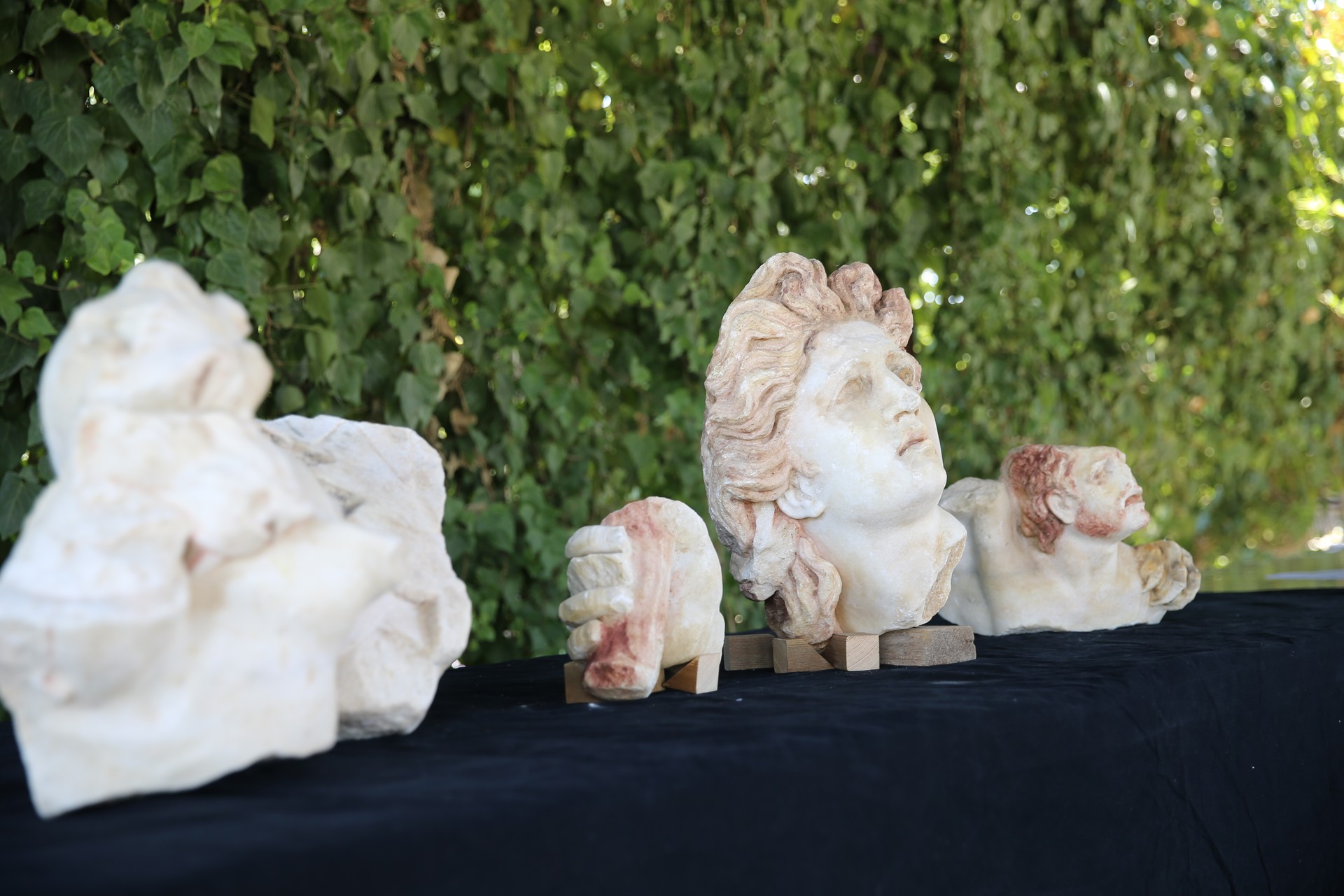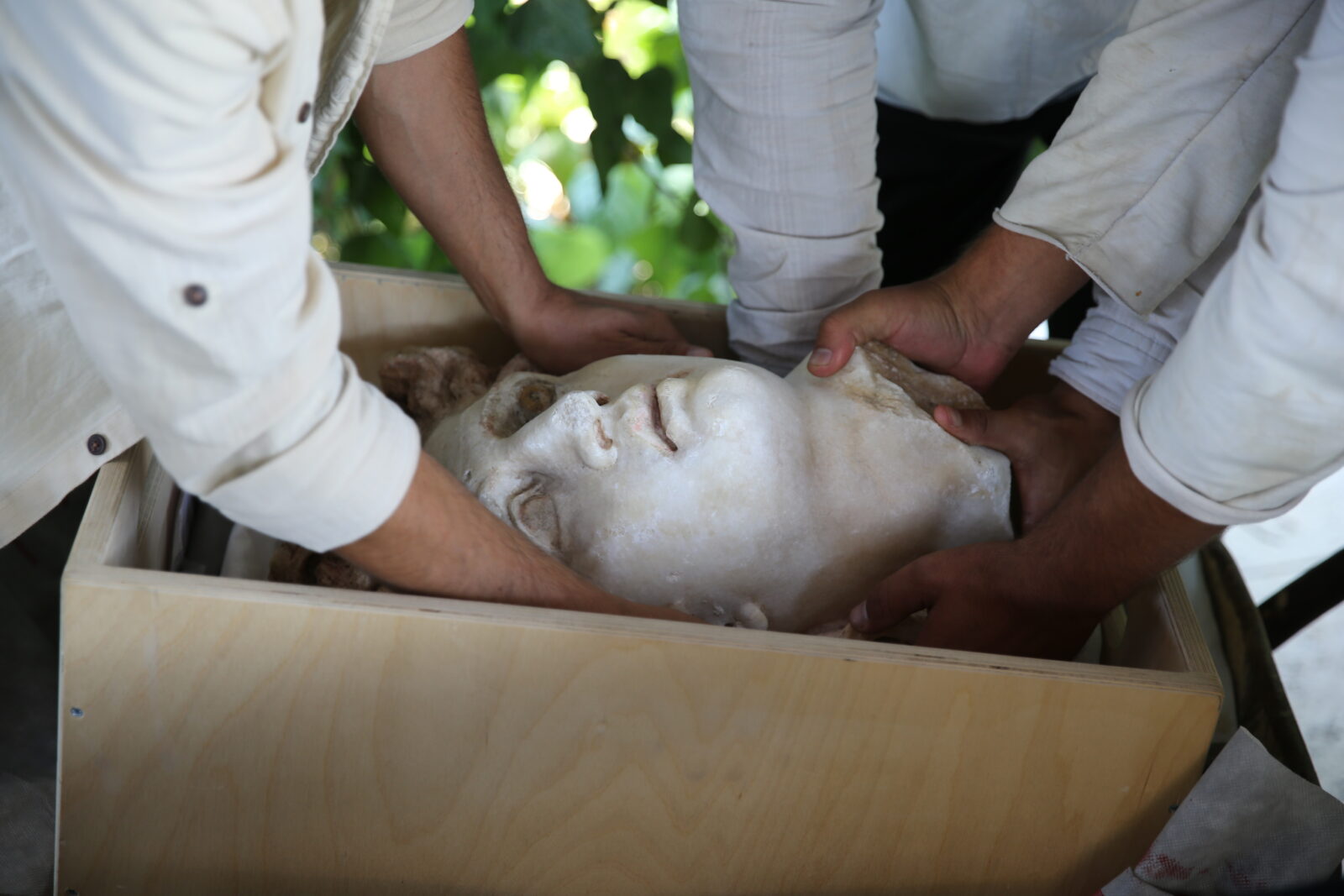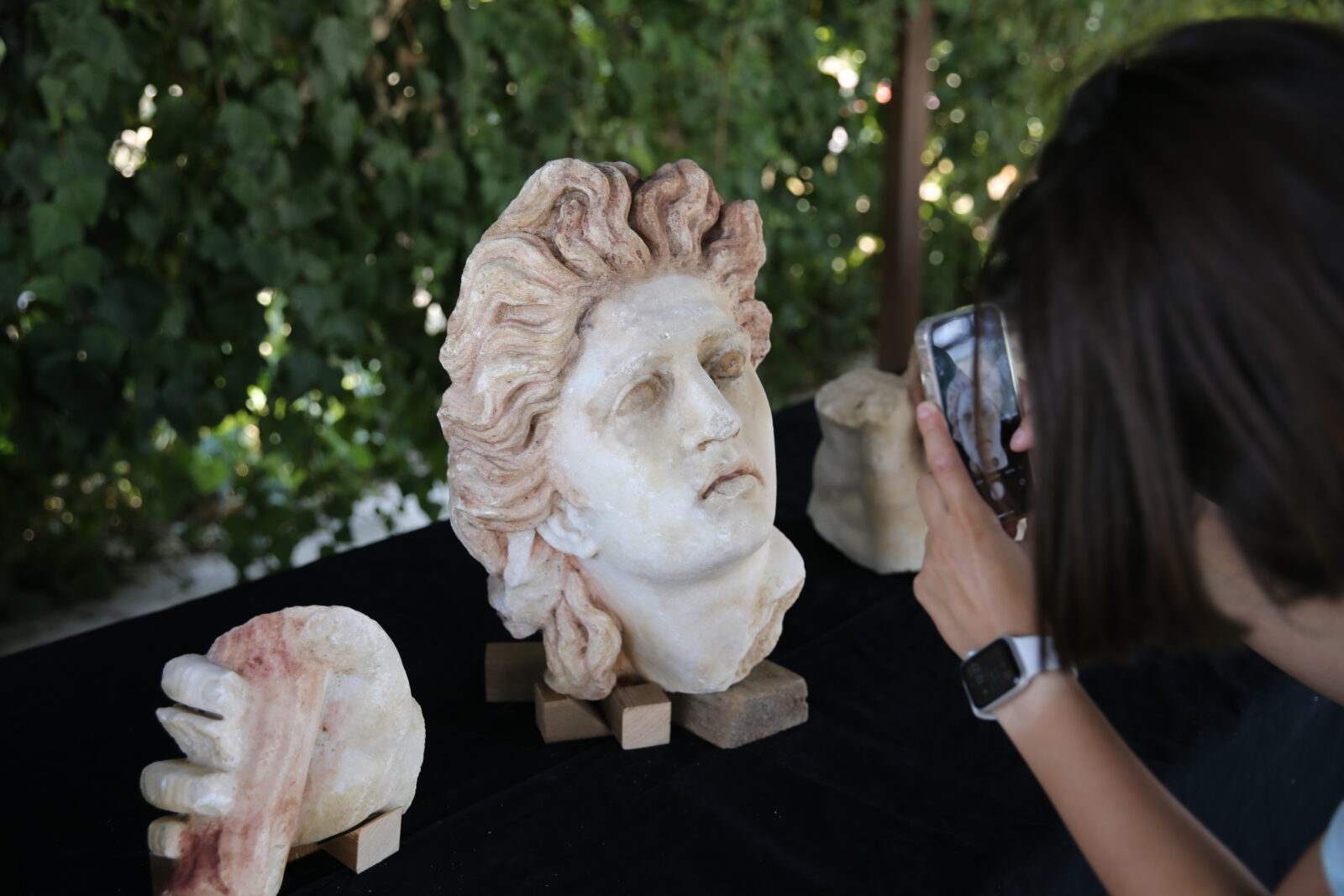
Minister of Culture and Tourism Mehmet Nuri Ersoy has announced the discovery of "unique and colorful" Skylla Group statues during the restoration of the stage building at Laodicea, Denizli, as part of the "Legacy for the Future Laodicea Project."
In a social media statement, Ersoy emphasized that the "Legacy for the Future" initiative, one of Türkiye's most extensive and ambitious archaeological endeavors, continues to produce remarkable findings.
"During the restoration of the stage building under the Legacy for the Future Laodicea Project, we have uncovered unique and colorful Skylla Group statues. These statues are particularly significant as they embody the Baroque style of the Hellenistic period and have remarkably retained their original colors," Ersoy said.

Professor Celal Simsek, Director of the Laodicea Ancient City Excavations, has revealed that the Skylla Group statues discovered in the ancient city, listed on the UNESCO World Heritage Tentative List, are the earliest and most original statues of their kind found to date.
In a briefing to journalists, professor Simsek provided details about the "unique and colorful" Skylla statues Minister Ersoy recently announced.
He explained that ongoing restoration work on the Western Theater's stage building revealed that some statues were found intact, while others had been broken and discarded into the fill beneath the boxes because of the transition from paganism to Christianity.
"Among the most significant finds is the Skylla Group. This group includes the head and hand of Skylla, the body of Odysseus – who was attacked and killed by wild dogs around Skylla’s waist – and parts of the ship’s prow," Simsek explained.
He noted these statues were created in the early 2nd century B.C. by Rhodos sculptors Athanadoros, Hagesandros and Polydoros.
The only other known copy of this group from the early Roman period was discovered in Sperlonga, Italy, in 1957.
"Our findings date from 27 B.C. to 14 A.D., representing the late Hellenistic and early Imperial periods. This makes them the earliest and most significant original group of their kind discovered so far."
Simsek expressed excitement about the discovery, highlighting the statues' well-preserved original colors and their importance for understanding early Hellenistic art and Homer’s mythological narratives.

In Homer’s Odyssey, Skylla is a sea monster encountered by Odysseus during his 10-year journey home from the Trojan War.
Skylla is described as having a woman’s upper body and a lower body surrounded by six heads of wild dogs.
According to the epic, as Odysseus’s ship passes by the cave where Skylla lies in wait, the monster attacks and devours six of Odysseus’s men.